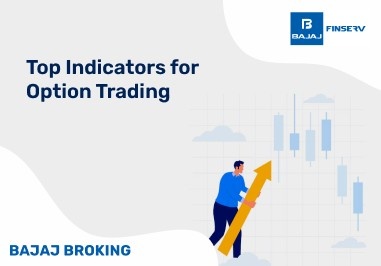BAJAJ BROKING
PDP Shipping & Projects IPO is Open!
Open a Free Demat Account
Trade Now, Pay Later with up to 4x
Track Market Movers Instantly
Share Market Today | Gift Nifty Indicates A Soft Start For Indian Markets Today
Synopsis:
Today’s share market features how Indian companies secure key contracts: ITI and GR Infra for BharatNet, DCX for Lockheed Martin. SpiceJet prepares 2025 seaplane launch. FIIs net sell ₹3,404.04 cr; DIIs net buy ₹1,748.44 cr Friday.
Latest Market News
1. ITI Emerges Lowest Bidder For 3 Packages of BharatNet Phase-3 Proj For A Total Value Of ₹4,559 Cr.
2. GR Infra declared the lowest bidder for BSNL's Bharat Net Ph 3 project worth Rs 867.54 cr.
3. SpiceJet to launch seaplane operations on multiple routes in 2025.
4. DCX Systems bags order worth₹460.3 cr from Lockheed Martin Global.
5. FIIs cash segment net sell (provisional) ₹3,404.04 cr while DIIs net buy ₹1,748.44 cr in equities on Friday.
[-]
Trade[-][-] ([-] %)
In-Depth Market Insights: Global Outlook, Derivatives & More
US Share Market News
Performance Overview:
The S&P500 closed at record highs on Friday after hitting unprecedented milestones intraday, spurred by ongoing optimism that a second Trump administration is likely to boost economic growth.
Sector-Specific Movements:
The S&P 500 gained 0.4% to close at a record high after briefly hitting a record 6,013.2. The Nasdaq 100 also closed at a record high, while the Dow Jones rose 259 points, or 0.6% to a closing record high after notching an intraday record of 44,157.29.
The University of Michigan's Consumer Sentiment reading climbed to 73 in November, up from 70.5 last month, beating economists' forecast of 71.
The reading was highest since April, as consumers turned more bullish on the economy, expecting an improvement in personal finances.
Focus this week was squarely on upcoming consumer price index inflation data for October, for more signs that inflation is easing.
Economic Indicators:
Beyond the CPI data, the focus this week is also on addresses by a string of Fed officials, who are expected to offer more insight into the central bank’s plans for interest rates.
Other Asset Classes
Treasury Yields:
The 10-year Treasury yield fell for a second day on Friday. The benchmark 10-year rate dipped 4 basis points to 4.29% after falling about 11 basis points in the previous session.
Currency:
The dollar rose on Friday and was heading for a slight weekly gain as investors evaluated the likely impact on the American economy of Tuesday’s election of Republican Donald Trump as U.S. president. The dollar index jumped to a four-month high of 105.44 last Wednesday but has dipped since, partly due to profit-taking. It was up 0.33% on the day at 104.75 on Friday.
Commodities:
Gold prices dropped on Friday, logging their steepest weekly decline in over five months, pressured by a stronger dollar. Spot gold fell 0.8% to $2,684.03 per ounce.
Oil prices fell more than 2% on Friday as traders grew less fearful of prolonged supply disruptions from a hurricane in the U.S. Gulf of Mexico, while China’s latest economic stimulus packages failed to impress some oil traders. Brent crude futures fell 2.33%, or $1.76, to settle at $73.87 per barrel.
Asian Markets
General Trends:
Asia-Pacific markets fell on Monday morning trade after China’s October inflation numbers came in lower than expected, prompting concerns over the recovery in the world’s second-largest economy.
Specific Index Performance:
Japan’s benchmark Nikkei 225 fell 0.14%, while the broad-based Topix was trading flat.
South Korea’s Kospi was down 0.57%, and the small cap Kosdaq was 0.58% lower.
India Market Outlook
GIFT Nifty Projection:
Gift Nifty suggests a soft opening for the Indian market amid weak Asian cues. Nifty spot in today's intraday trade to extend corrective consolidation in the range of 24000-24250.
Market in Previous Session:
Benchmark indices Nifty and Sensex ended Friday’s session on a weak note, slipping for a second consecutive day after a sharp downturn in realty and energy stocks dented the sentiment further on the bourses. Despite weakened momentum, IT and FMCG managed to shrug off jitters and closed on a positive note. The Sensex was down 55.47 points or 0.07 per cent at 79,486.32, and the Nifty was down 51.10 points or 0.21 per cent at 24,148.20. About 1314 shares advanced, 2475 shares declined, and 95 shares were unchanged.
Bank Nifty also traded with corrective bias and closed the session lower by 0.7% on Friday's session. The broader market witnessed selling pressure as the Nifty midcap and small-cap index lagged behind the main indices with Nifty midcap and small-cap closed down by 1.3% and 1.7% respectively.
Nifty Short-Term Outlook:
Index has formed a small bear candle with a lower high and lower low signalling corrective bias for the second session in a row. Nifty during last week has reacted lower form the 20 days EMA which has acted as a stiff resistance in the entire decline of the last 6 weeks.
Nifty in the last two weeks is broadly consolidating in the range of 24500-23800. Index during last week reacted lower from the upper band of the range (24500), highlighting corrective bias. Index sustaining above last week's low (23816) will be crucial for any sizable pullback to materialize. Failure to do so will lead to an extension of decline towards 23550 levels.
On the higher side, only a close above 24500 levels will signal a pause in the corrective trend.
Intraday Levels:
Nifty: Intraday resistance is at 24,240 followed by 24,370 levels. Conversely, downside support is located at 24,050, followed by 23,970.
Bank Nifty: Intraday resistance is positioned at 51,820, followed by 52,100, while downside support is found at 51,230, followed by 50,950.
Derivative Market Analysis
Nifty:
An interesting data point to note is that the highest call OI addition has been observed at the 25,000 level, while immediate call OI is noted at the 24,500 level, which will serve as immediate resistance.
On the flipside, immediate put OI is noted at the 24,000 level, whereas major put OI is positioned at the 23,500 level.
According to option chain analysis, the immediate range for Nifty is 24,000–24,500. A break on either side of this range will likely trigger a further directional move.
The Nifty put-call ratio remains unchanged at 1.00.
Bank Nifty:
The highest call OI in Bank Nifty has been observed at the 52,500 level, while immediate call OI is noted at the 52,000 level, which will act as resistance.
The highest put OI is positioned at the 51,000 level, providing crucial support for Bank Nifty.
If the price holds below the 51,500 level, a correction could be possible. On the flip side, short-covering might be seen if Bank Nifty moves above the 52,000 level.
The Bank Nifty put-call ratio has increased by 1, now standing at 0.91.
Midcap Nifty:
Call writers seem to be active at the 12,600 and 12,700 levels, which will act as resistance, with the highest call OI placed at the 13,000 level.
Below the 12,400 level, put writers appear active, suggesting multiple layers of support.
According to option chain analysis for the weekly expiry, the deciding range for Midcap Nifty is 12,400–12,600. A break on either side of this range is likely to trigger a further directional move.
Stay on top of the latest market news with Bajaj Broking’s insights. Our point-to-point expert analysis digs deep into the surface, empowering you with a unique perspective on domestic and global stock market events. Get all the current share market news, including US share market updates in one place and make wise investment decisions.
Disclaimer: Investments in the securities market are subject to market risk, read all related documents carefully before investing.
This content is for educational purposes only. Securities quoted are exemplary and not recommendatory.
For All Disclaimers Click Here: https://bit.ly/3Tcsfuc
Read More Blogs
Our Secure Trading Platforms
Level up your stock market experience: Download the Bajaj Broking App for effortless investing and trading













